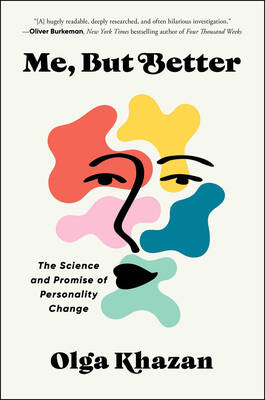People usually think of skateboarding as the domain of white kids who listen to punk rock, alternative music, or heavy metal. But there's a growing side to the sport: a multicultural array of skateboarders who enjoy hip-hop culture.
Some use rap music as the sound track to push wood. Others, such as Evan Collins, a 25-year-old Cambridge resident, are as skilled at MCing as they are at doing the manual, a trick in which the skater balances on the board's back wheels.
“They're both, like, really urban sort of arts almost,” says Collins, who began skateboarding when he was 11 and often showcases his skills in the financial district, Copley Square, and the Aquarium. “A lot of rappers come from the city. Their music is based on city-type stuff. The same thing with skateboarding; we skateboard in the city all the time.”
The relationship between the two street cultures goes as far back as the late 1970s, when a group of skateboarders and graffiti artists united in Manhattan to form the Zoo York crew. Some of them went on to create the skateboard companies SHUT and Zoo York, which is now a popular line owned by clothier Marc Ecko.
These days it's not unusual to hear the rhythms of hip-hop blaring at the X-Games or on skateboarding DVDs. Mos Def's 2004 video Ghetto Rock intersperses images of break-dancers with those of skateboarders doing tricks in New York's Bedford-Stuyvesant neighborhood. Electrik Heat — The Seekwill, the lead single from k-os' new album, Atlantis: Hymns for Disco, shows people scratching, break-dancing, and skateboarding.
Some in the skateboarding community welcome the expanding definition.
“It's certainly going to help skateboarding become more accepted all over,” Collins says. “A lot of people still seem to think skateboarding is long hair and tight pants and alternative music and metal. ... There's more diversity in skateboarding than a lot of people think.”
But these developments don't sit well with everyone.
Spungie, who won't divulge his full name, has worked in local skateboard and snowboard shops since he was 15. Now, at 31, he's a manager at Laced, a sneaker and skateboarding boutique in the South End. While he admits to being a fan of hip-hop, he feels obligated to point out that he likes hard rock and reggae as well.
Spungie casts a skeptical eye at recent attempts to blend the worlds of hip-hop and skateboarding. This summer, producer and MC Pharrell Williams, who cosponsors the California-based Ice Cream Skate Team, rechristened himself Skateboard P just in time to promote his Grammy-nominated CD In My Mind. Rapper Lupe Fiasco scored a huge hit with Kick Push, a Grammy-nominated song about the life of a skateboarder that touches on everything from the bruises earned learning the sport to the struggles to find a welcoming place to skate. The Chicago-based rapper underscored his interest in the culture by teaching MTV VJ Sway a few skating tricks in an episode of the channel's My Block: Chicago.
“Real skateboarders don't respect any of that that's going on,” Spungie says. “A lot of styles and a lot of trends have been based off of skateboarding: everything from sneakers all the way up to apparel, you know. So a lot of people are just posers, I guess. ... I mean Pharrell likes to talk all this nonsense on this and that, but everybody knows the kid can't skate.” (In interviews, Pharrell has said that he began skateboarding after his family moved from the projects in Virginia Beach to the suburbs.)
Spungie is not thrilled that the song Vans by California's the Pack is getting hip-hop fans to embrace the once-dorky sneakers. The song's lyrics boast:
Man, we be sportin' Vans and we throw away Nikes
If you wanna get right, stop buyin' those Nikes
Get some new ...Vans and you'll bet you look icy
The song started as a MySpace phenomenon. Now its video, made three weeks after the teen quartet signed with Jive records in June, has received more than 800,000 views on YouTube. The video shows people tagging walls and break-dancing with innumerable close-up of various Vans styles. Its success inspired Jive to release a Pack EP called Skateboards 2 Scrapers last week.
Young Stunna, a member of the Pack, understands the testiness of skateboarders such as Spungie.
“If it ain't what you do,” says Young Stunna, whose real name is Keith Jenkins, “people are going to have something to say. Be prepared to hop on that board. As for me, I ain't worried about that backlash because I really do this. ‘Cause I'm out here straight up.”
In fact, he was taking a break from skateboarding with his friends at a Walgreens in Berkeley, California, to be interviewed. Young Stunna began skateboarding seven years ago and considers it an important stress reliever. He remembers being one of the few non-whites doing it at that time. “When I started,” the 19-year-old notes, “people weren't having that, especially black people.”
Group member Lil B suggested they write a song about Vans. “I'm like, man, let us rap about something that nobody's wearing,” says Lil B (Brandon McCartney). Although he doesn't skateboard, personal experience taught Lil B that there would be an audience for it.
“From the outside looking in,” he says, “skateboarders are punk-rock white kids. [But] I know people who are hood rats who skateboard, black people who listen to hip-hop.”
That community, as well as a wider crowd of non-skateboarders, is now heading to stores such as Orchard, a skate shop that opened in Mission Hill (Boston) in February, to purchase Vans.
“We have definitely not our normal clientele coming in,” says Jon Devoe, co-owner of Orchard. “We have people from Roxbury, Dorchester, Mattapan — all over. It's crazy.”
Vans publicist Chris Overholser says the shoes had been gaining acceptance in the urban community before the song was released. But Devoe estimates that about half the hip-hop clientele visiting his store to buy the US$40 sneakers are being lured by Vans.
“We have people who'll come in our store singing that song,” Devoe says. “It's definitely two worlds colliding. But it's great, it's really good, really positive.”
Of course, not everyone sees it that way.
“It's really funny,” says Spungie, “how some idiot can make a song about Vans and everyone out here thinks they need a pair of Vans. The funny thing is two years from now those kids aren't even going to be wearing them. I don't believe in that type of hype.”

Last week, the the National Immigration Agency (NIA) told the legislature that more than 10,000 naturalized Taiwanese citizens from the People’s Republic of China (PRC) risked having their citizenship revoked if they failed to provide proof that they had renounced their Chinese household registration within the next three months. Renunciation is required under the Act Governing Relations Between the People of the Taiwan Area and the Mainland Area (臺灣地區與大陸地區人民關係條例), as amended in 2004, though it was only a legal requirement after 2000. Prior to that, it had been only an administrative requirement since the Nationality Act (國籍法) was established in

Three big changes have transformed the landscape of Taiwan’s local patronage factions: Increasing Democratic Progressive Party (DPP) involvement, rising new factions and the Chinese Nationalist Party’s (KMT) significantly weakened control. GREEN FACTIONS It is said that “south of the Zhuoshui River (濁水溪), there is no blue-green divide,” meaning that from Yunlin County south there is no difference between KMT and DPP politicians. This is not always true, but there is more than a grain of truth to it. Traditionally, DPP factions are viewed as national entities, with their primary function to secure plum positions in the party and government. This is not unusual

More than 75 years after the publication of Nineteen Eighty-Four, the Orwellian phrase “Big Brother is watching you” has become so familiar to most of the Taiwanese public that even those who haven’t read the novel recognize it. That phrase has now been given a new look by amateur translator Tsiu Ing-sing (周盈成), who recently completed the first full Taiwanese translation of George Orwell’s dystopian classic. Tsiu — who completed the nearly 160,000-word project in his spare time over four years — said his goal was to “prove it possible” that foreign literature could be rendered in Taiwanese. The translation is part of

The other day, a friend decided to playfully name our individual roles within the group: planner, emotional support, and so on. I was the fault-finder — or, as she put it, “the grumpy teenager” — who points out problems, but doesn’t suggest alternatives. She was only kidding around, but she struck at an insecurity I have: that I’m unacceptably, intolerably negative. My first instinct is to stress-test ideas for potential flaws. This critical tendency serves me well professionally, and feels true to who I am. If I don’t enjoy a film, for example, I don’t swallow my opinion. But I sometimes worry